Depth sensor cameras are becoming more and more popular in the world of photography. But what exactly are they, and how do they work?
Depth sensor cameras are basically two cameras in one body. One is a traditional RGB camera, while the other is an infrared (IR) camera. The IR camera is used to measure the distance between the camera and objects in the scene. This information is then used to calculate the depth of field for each image [1].
The advantage of using a depth sensor camera is that it can create images with a shallow depth of field, even in low-light conditions. This means that you can focus on a specific subject, while the background remains blurred. Depth sensor cameras are also great for video applications, as they can create a realistic three-dimensional effect.
In this blog post, we will explore the inner workings of depth sensor cameras and discuss how they are changing the landscape of photography. Stay tuned for an in-depth look at these amazing devices!
How a Depth Sensor Works – Quick Description
A camera’s depth sensor blurs a distracting background, turning background light points into softer circle points. This creates a shallow depth of field (blur) between the subject and the background.
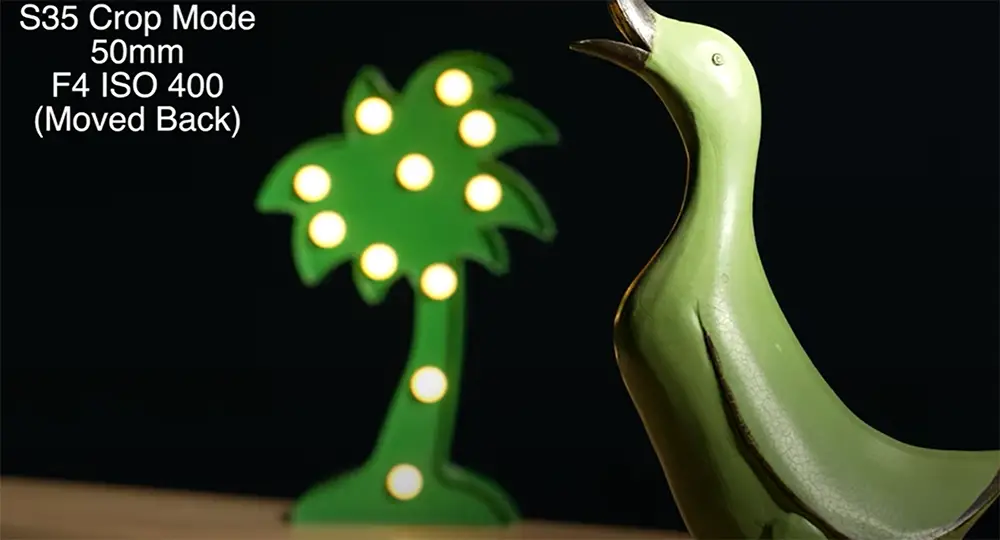
The depth sensor in a camera, as the name implies, detects depth. With beautiful effects and augmented reality, these depth sensors blur the background and make the subject stand out from it [2].
This is a very important development in the world of photography.
It gives you more control over your photos and opens up new possibilities for creativity.
The advantage of this system is that it works in any lighting conditions, including low light and even complete darkness. It also doesn’t require any special calibration like some other depth-sensing systems.
Depth sensors are used in a variety of applications, including video games, security systems, and automotive safety. They’re also being used more and more in consumer devices like smartphones and tablets.
Today’s depth sensors are being supplanted by new ultra-wide and telephoto lenses that allow you to get better portraits. These newer lenses may capture people more effectively, so you won’t need another camera. If a telephoto camera is sufficient, you might not need a depth sensor at all. In addition, you might be interested in telephoto vs. zoom lens comparison.
TOF Depth Sensors
Time of Flight (TOF) is a term that refers to the time it takes a light ray to travel from one point to another [3]. It determines how far apart two points are based on the length of time it takes for light to travel between them. The camera may now take not only a portrait but also 3D photos, which can be 3D printed. The camera may also determine the subject’s distance. Most cellphone companies are using TOF sensors instead of previous depth sensors.
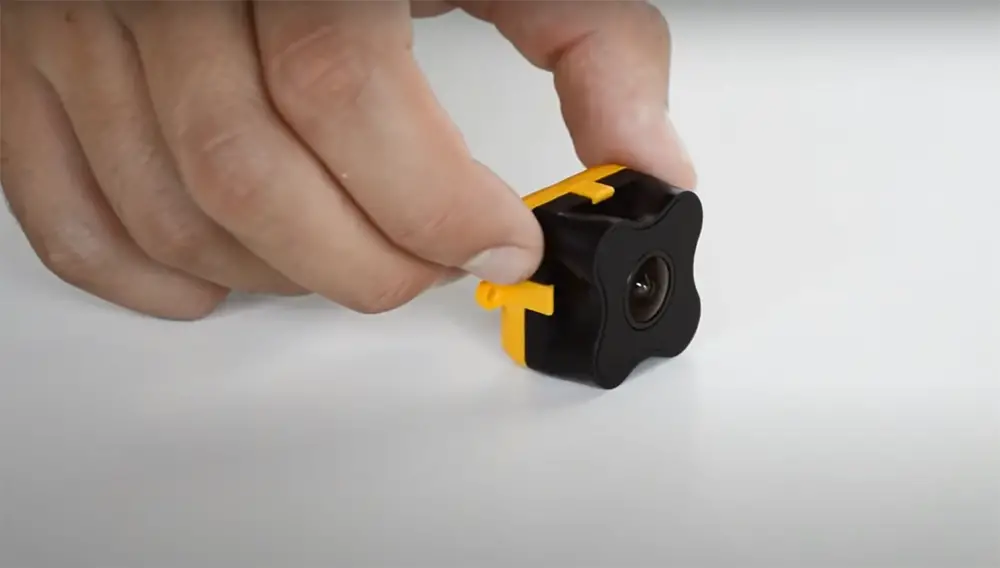
The TOF depth sensing is genuine, and it aids in 3D photo capturing. TOF sensors are now available on smartphones such as the Galaxy S20 Ultra and S20+. These cameras are able to sense the subject’s depth and distance from the backdrop, as well as its background, and take your photography skills to a new level.
Do Depth Sensors in Smartphones Actually Work?
We’ve all seen the commercials. A new smartphone is released with a depth sensor camera, and we’re told that this will revolutionize photography. But how does a depth sensor actually work?
There are two main types of depth sensors: active and passive. Active depth sensors emit a light source, usually in the infrared spectrum, and then measure the time it takes for that light to bounce back off of an object. This information is then used to calculate the distance to the object. Passive depth sensors, on the other hand, use existing light sources, like those from the sun or artificial lights, to create a three-dimensional map of an area.
So which type of depth sensor do smartphones use? The answer is both. Most newer smartphones have what’s called a time-of-flight sensor, which is an active depth sensor. This is combined with a passive depth sensor, usually referred to as a structured light sensor, to create a more accurate depth map.
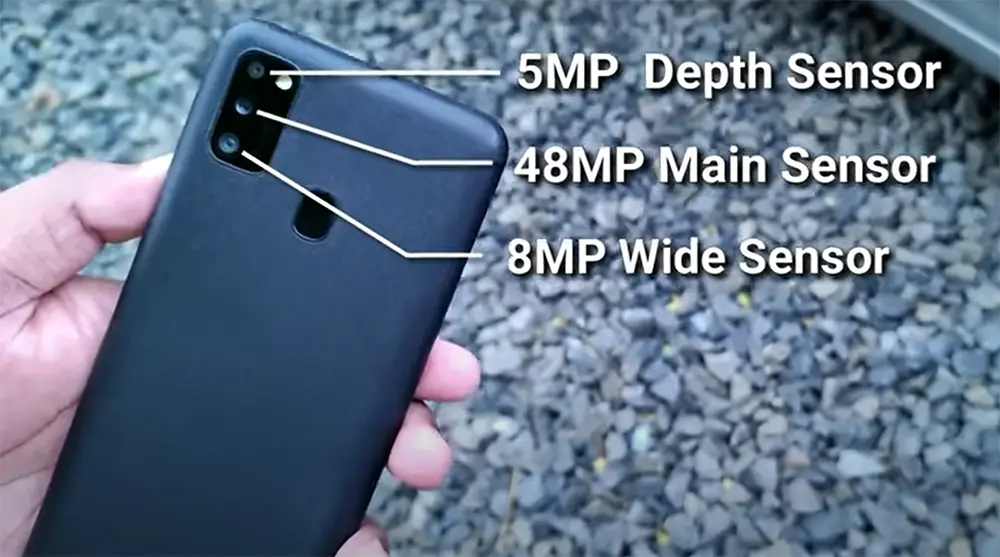
With the release of the iPhone X, Apple introduced a new type of depth sensor called the Face ID camera. This uses infrared light to map your face in three dimensions, which is then used for security purposes [4].
Aperture Priority Mode
Don’t worry if your smartphone camera lacks a dedicated depth sensor; it was useless long ago. To create a Bokeh effect, set the aperture to the maximum value stated in your camera’s specifications and use aperture priority mode. When it comes to shutter speed, you must use auto mode.
Achieving a shallow depth of field requires that your subject be close to the camera and that there’s a significant distance between your subject and the background. The closer your subject is to the camera, the easier it will be to achieve a shallow depth of field.
You can also use editing software like Adobe Photoshop to create a Bokeh effect by using the blur tool. This can be done after you’ve taken the photo or even on a photo that you found online.
Focal Length Adjustment
You may also use a longer focal length to make the background blurry. Don’t be perplexed if you hear adjusting the focal length referred to as zooming in or out; it’s a fancy way of saying that [5]. The focal length adjustment is usually on the lens itself.
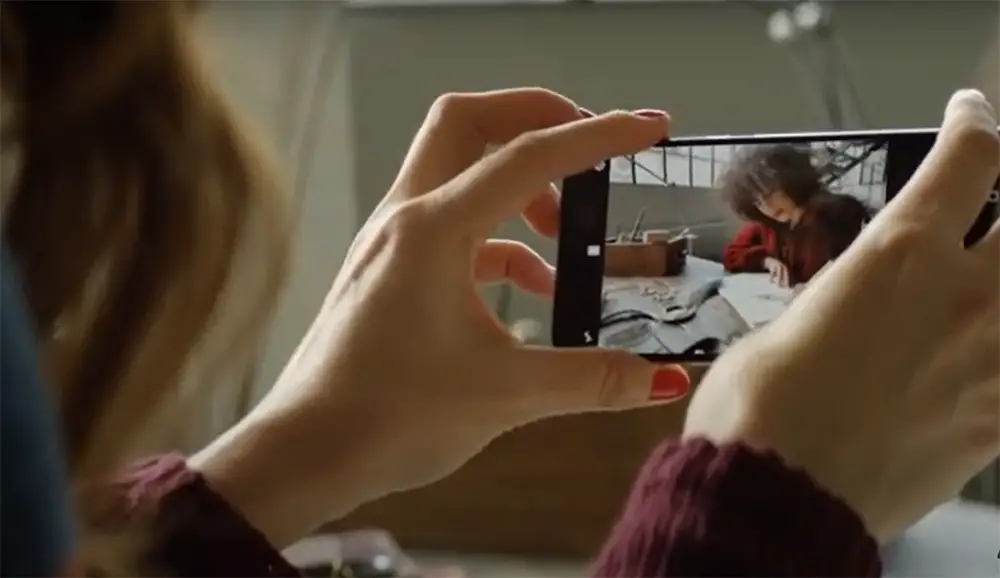
Some phones have a second camera with a longer focal length. If you don’t have one of those, you can still use the portrait mode by cropping the image after taking it. The trade-off is that you’ll lose some of the resolutions, but it’s worth it for a good bokeh effect.
Read more posts to improve your photography skills:
How Does a Depth Sensor Camera Work – Indicators Explanation
Depth sensor cameras utilize advanced technology to capture depth information of a scene, allowing for the creation of 3D depth maps. These cameras are crucial in various applications, such as augmented reality, robotics, and gesture recognition. In this table, we will explore the key indicators that play a vital role in understanding how depth sensor cameras work.
| Indicator | Description |
|---|---|
| Depth Range | The depth range refers to the minimum and maximum distance from the camera at which it can accurately measure depth. A wider depth range allows the camera to capture objects both near and far from its lens. |
| Depth Accuracy | Depth accuracy signifies the precision with which the camera can measure the distance to objects in the scene. High depth accuracy is crucial in applications that require precise depth information. |
| Field of View (FOV) | The field of view represents the extent of the scene that the camera can capture in a single frame. A wider FOV allows the camera to cover more area, providing a broader perspective. |
| Technology Used | The underlying technology used in the depth sensor camera affects its performance. Common technologies include Time-of-Flight (ToF), structured light, and stereo vision. |
| Light Source | Depth sensors often utilize a light source to illuminate the scene for accurate depth measurement. The type of light source employed can impact the camera’s performance in various lighting conditions. |
| Application | The specific application for which the depth sensor camera is designed greatly influences its features and capabilities. Some cameras are optimized for smartphones, while others are tailored for robotics or gaming. |
Explanation:
- Depth Range: This indicator determines the range of distances over which the camera can measure depth accurately. A larger depth range allows the camera to capture objects at varying distances, making it versatile for different applications.
- Depth Accuracy: Depth accuracy reflects the precision of the camera’s depth measurements. A camera with high depth accuracy is essential in applications that require fine-grained depth information, such as object recognition or virtual object placement.
- Field of View (FOV): The field of view indicates the breadth of the scene that the camera can capture in a single shot. A wider FOV is advantageous in scenarios where a broader perspective is necessary, like in immersive augmented reality experiences.
- Technology Used: Depth sensor cameras utilize various technologies like Time-of-Flight (ToF), structured light, or stereo vision. Each technology has its strengths and weaknesses, affecting factors such as accuracy, range, and cost.
- Light Source: To measure depth accurately, some cameras employ a dedicated light source, such as infrared illumination. The type and intensity of the light source play a role in the camera’s performance under different lighting conditions.
- Application: Depth sensor cameras are designed with specific applications in mind. For instance, a camera optimized for smartphones may prioritize compactness and power efficiency, while a camera for robotics may focus on robustness and precision.
Understanding these key indicators helps users and developers choose the most suitable depth sensor camera for their intended use, ensuring optimal performance and functionality in their respective applications.
FAQ
How do I know if my depth sensor is working?
If you have a computer with a depth sensor camera, you can check if it’s working by looking at the device manager. If the camera is working properly, it should be listed under “Imaging devices”. If it’s not working, then there might be a problem with your driver or your hardware.
To test if your depth sensor is working, you can use the Kinect Viewer tool that comes with the Kinect SDK [6]. This tool will show you a live view of what the depth sensor sees, and it will also give you some information about the current frame rate and resolution.
If you’re having trouble getting your depth sensor to work, make sure that you’ve installed the latest drivers for your device. You can usually find these on the website of manufacturer.
What does the depth camera do on a phone?
The depth sensor camera is used to estimate the distance to objects by using infrared light. This information can be used to create a three-dimensional map of the environment. The camera can also be used for hand gestures and facial recognition.
Depth sensor cameras are not new technology, but they are becoming more common in smartphones. The iPhone X was one of the first phones to include a depth sensor camera. The Google Pixel and Samsung Galaxy S20 series also have depth sensor cameras.
The depth sensor camera uses an infrared projector and an infrared camera to emit and detect infrared light. By measuring the time it takes for the light to bounce back, the phone can calculate how far away an object is.
Is depth and telephoto the same?
A telephoto lens, unlike a depth sensor, does an excellent job at compressing the perspective while also providing crispness to the photograph. Using a telephoto lens, you may obtain a minimal and abstract composition with black mist and a single point of focus [7].
Depth sensors, on the other hand, are not very good at compressing the perspective. Instead, they excel at capturing three-dimensional (depth) information. This is because depth sensors use an infrared (IR) light source and a special IR camera to capture images.
The way it works is that the IR light source projects a grid of IR dots onto the scene. The depth sensor’s IR camera then captures how these dots are distorted as they reflect off objects in the scene. By analyzing this data, the depth sensor can determine how far away each point in the scene is from the camera.
What is a 2MP depth sensor?
The dedicated macro lens allows users to get up close to the things while capturing the photos, and the dedicated 2MP depth sensor aids in real-time depth detection for a better Bokeh effect.
For example, OnePlus has used similar technology in its recently launched OnePlus Nord phone. The phone makes use of a time-of-flight (TOF) sensor for bokeh shots as well as for detecting objects and surfaces for AR purposes.
The Chinese company has also included a time-of-flight (ToF) sensor which uses an infrared laser to measure the distance between the subject and the camera. This, in turn, helps create a realistic depth of field effect.
Why is my true depth camera not working?
If your True Depth camera isn’t working, it might be due to a number of different reasons. First, make sure that there’s nothing blocking the sensor, such as dirt, dust, lint, or a case. If that doesn’t fix the problem, try restarting your device. If that still doesn’t work, contact Apple Support.
How do you shoot depth of field?
The shallow depth of field is created by using a low f-number, or f-stop, such as 1.4 to 5.6, to let in more light when taking photographs. It’s very difficult to focus on many things at once. This is the range in which your attention may be focused between a few inches and a few feet. You can blur the foreground or background of your picture, depending on your topic and area of interest point [8].
A deep depth of field can be created by using a high f-number, such as f/11 to f/22. This will result in everything from a few inches in front of your camera all the way to the horizon being in focus.
You want to make sure that you have enough light when taking pictures with a high f-stop because a small aperture means less light is entering the camera.
How does a depth sensor camera work?
Depth sensor cameras work by emitting infrared light or laser beams onto the subject and measuring the time it takes for the light to bounce back to the camera. This time-of-flight (TOF) or structured light technology allows the camera to create a depth map of the scene, indicating the distance of objects from the camera. This information is then used to generate a 3D representation or add depth effects to images.
What is the purpose of a depth sensor in a camera?
The primary purpose of a depth sensor in a camera is to enable advanced depth perception. By accurately measuring the distance between the camera and various objects in the scene, the depth sensor allows for the creation of realistic bokeh (background blur) effects, improved augmented reality experiences, accurate facial recognition, and other depth-based features in photography and mobile applications.
How does a time-of-flight (TOF) depth sensor work?
A time-of-flight depth sensor works by emitting a pulse of light, such as infrared or laser, towards the subject. The sensor then measures the time it takes for the light to bounce back to the camera. Since light travels at a known speed, the camera can calculate the distance between itself and the objects based on the time it takes for the light to return. This data is used to create a depth map of the scene.
What is structured light technology in depth sensors?
Structured light technology is another method used in depth sensors to measure distance. It involves projecting a pattern of infrared light onto the subject. The distortion of this pattern on the objects is then analyzed by the camera’s sensor. Based on the distortion, the depth sensor can determine the object’s distance from the camera, allowing for the creation of depth maps and other depth-related features.
How is depth information used in photography?
Depth information in photography is used to create various artistic effects. By knowing the distance of objects from the camera, photographers can apply realistic background blur (bokeh) to isolate subjects, resulting in a professional-looking portrait. Depth information is also utilized in post-processing to add 3D effects, such as changing the focus point or altering the background.
What are the applications of depth sensor cameras?
Depth sensor cameras have a wide range of applications. They are commonly used in smartphones for facial recognition, bokeh effects, and augmented reality experiences. In robotics, depth sensors help with object detection and navigation. They are also utilized in the automotive industry for driver-assistance systems and in various industrial applications like 3D scanning and measurement.
Can depth sensor cameras work in low light conditions?
Depth sensor cameras that use time-of-flight (TOF) technology can struggle in very low light conditions since they rely on emitting and detecting light. However, some depth sensors equipped with infrared illuminators can still function reasonably well in low light environments. Structured light depth sensors may also perform better in low light as they project their own light pattern onto the scene.
How does a depth sensor differ from a regular camera?
A regular camera captures a 2D representation of a scene, whereas a depth sensor camera provides additional depth information, enabling the creation of 3D models or depth maps. This additional data allows for various depth-based effects and applications like augmented reality and accurate distance measurements, which are not possible with a standard camera.
Are all smartphones equipped with depth sensor cameras?
No, not all smartphones have depth sensor cameras. Depth sensors are more commonly found in mid-range to high-end smartphones, particularly in devices geared towards photography enthusiasts or those with augmented reality capabilities. Budget smartphones may not include a dedicated depth sensor, relying instead on software-based depth effects using multiple camera lenses.
How accurate are depth sensor cameras?
The accuracy of depth sensor cameras can vary depending on the technology and the quality of the sensor. Time-of-flight (TOF) depth sensors and structured light depth sensors are generally more accurate than software-based depth effects using dual cameras. High-quality depth sensors can achieve accuracy within a few millimeters, making them suitable for precise applications like 3D scanning and measurement.
Useful Video: Depth Cameras
References:
- https://camlense.com/how-does-a-depth-sensor-camera-work/
- https://camlense.com/how-does-a-depth-sensor-camera-work/
- https://en.wikipedia.org/wiki/Time_of_flight
- https://en.wikipedia.org/wiki/Face_ID
- https://camlense.com/how-does-a-depth-sensor-camera-work/
- https://www.microsoft.com/en-in/download/details.aspx?id=40278
- https://camlense.com/telephoto-lens-vs-depth-sensor/
- https://www.adobe.com/creativecloud/photography/discover/shallow-depth-of-field.html





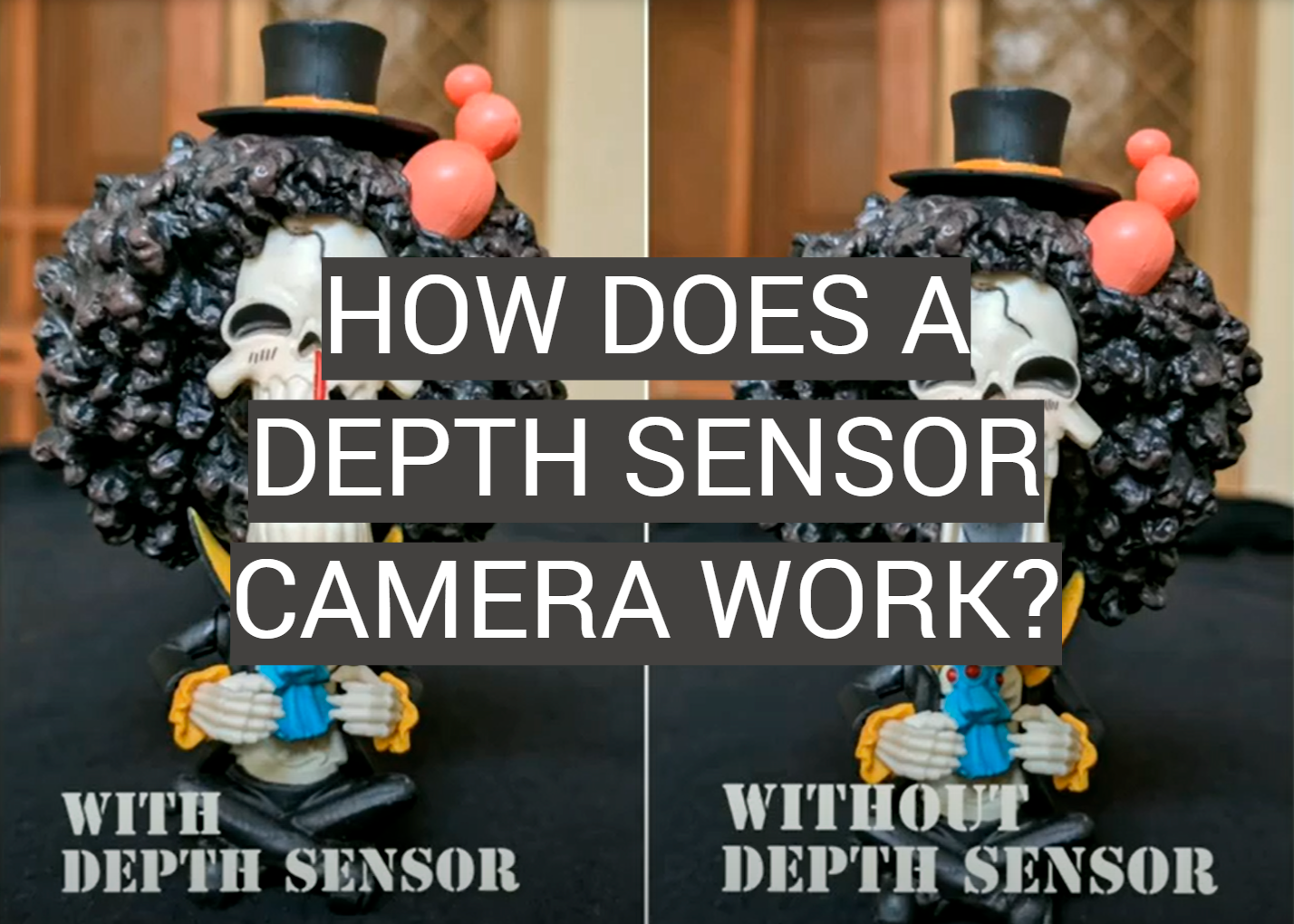
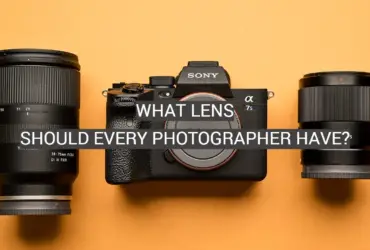
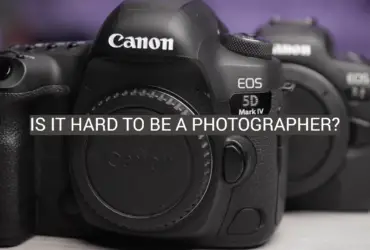
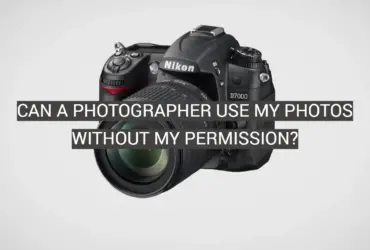

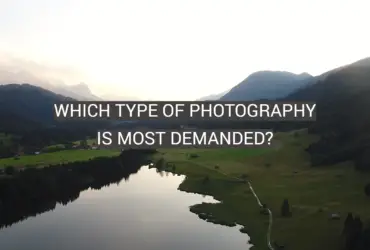
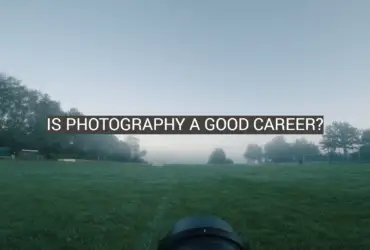
Depth sensor cameras are amazing pieces of technology! They work by using a technique called “structured light.” This means that the camera projects a known pattern onto the object that it is trying to measure. By analyzing the distortion of the pattern, the camera can calculate the depth of the object. This is a really cool way to get a 3D image of an object!
I think depth sensor cameras are really neat! They are a great way to get a 3D image of an object, and they are becoming more and more popular. I can’t wait to see what new applications for them come out in the future!
Depth sensor cameras are one of my favorite pieces of technology. They allow you to see the world in a whole new way and can be used for a variety of purposes. I’ve used depth sensor cameras to create 3D models of objects, to map out spaces, and to create videos and photos with a unique perspective.
Depth sensor cameras work by using infrared light to calculate the distance between the camera and objects in the scene. This information is then used to create a 3D representation of the scene that can be viewed on a computer or other device. This technology is becoming more and more common, and I’m excited to see what new applications it will be used for in the future.
Depth sensor cameras are amazing pieces of technology! I have used them for both personal and professional projects, and they never cease to amaze me.
Depth sensor cameras are able to calculate the depth of an object in a scene by measuring the time it takes for light to bounce off that object and return to the camera. This is possible because depth sensor cameras come equipped with a special lens that splits the incoming light into two beams. One beam is sent out in a straight line, while the other is bounced off of the object in question. By measuring the time it takes for the reflected beam to return to the camera, the depth of the object can be calculated.
This technology can be used for all sorts of things, from creating 3D models of objects to helping with augmented reality and virtual reality applications. I have used depth sensor cameras for a variety of projects, including creating a 3D model of my house and its surroundings for use in a video game, and capturing 3D scans of people’s faces for use in online avatars. Depth sensor cameras are extremely versatile and can be used for all sorts of applications.
Depth sensor cameras are becoming more and more popular in today’s society. They are used in many different ways such as for security, gaming, and even just for fun. I have personally used a depth sensor camera for a gaming application and found it to be very fun and interesting.
To use a depth sensor camera, you first need to install the necessary software and drivers. After that, you need to open the software and select the depth sensor camera as your video source. Once that is done, you can begin using the depth sensor camera to capture video.
One thing to keep in mind when using a depth sensor camera is that the video will be in black and white. This is because the depth sensor camera is only able to capture depth information and not color information. However, this doesn’t really affect the overall quality of the video.
Depth sensor cameras are a lot of fun to use and can be used for many different applications. If you haven’t tried using one before, I highly recommend giving it a try.
Depth sensing cameras are used for many different purposes, but the most popular use is for creating 3D images. These cameras use infrared light to calculate distances between objects and can create realistic 3D images using a technique called stereoscopy. This is done by capturing two photos of an object at slightly different angles and then combining the images into one 3D image.
Depth sensing cameras are also used for facial recognition, gesture tracking, and even measuring distances in some industrial applications. I have used a depth sensing camera to create 3D images and it was a really cool experience. It’s amazing how you can see the depth of an object in the image and how you can move around it to get a better view. I definitely recommend trying out a depth sensing camera if you have the opportunity!
Depth sensor cameras have completely changed the way I take photos and videos. Being able to see what is in the foreground and background of a shot makes it so much easier to get the perfect picture or video. For example, I can now easily blur out the background of a photo to focus on the subject, or capture a video of a person without having to worry about them walking out of the frame. Depth sensor cameras have also made it possible for me to take photos and videos with more depth and dimension. I highly recommend anyone looking for a better photography or videography experience to try using a depth sensor camera!
When I got my new Lenovo laptop with a built-in depth sensor camera, I was excited to try it out. I followed the instructions to download the software and try out the different features. The first thing I tried was the facial recognition login. It worked great and was very easy to set up.
I also wanted to try out the 3D scanning feature. I found an object that I wanted to scan and followed the instructions to do so. It was very easy to use and the results were amazing! The scanner was able to capture all of the details of the object perfectly.
Overall, I am very impressed with the depth sensor camera on my Lenovo laptop. It is easy to use and produces great results. I would definitely recommend it to anyone who is looking for a good quality depth sensor camera.
When I was younger, my parents bought me a depth camera for my birthday. Depth cameras are used for a variety of purposes, but the one I use it for most is to create 3D models of objects. I have always been interested in 3D printing and creating objects, so this camera has been a great tool for me.
Depth cameras work by projecting a pattern of light onto an object and then measuring the time it takes for that light to return. This information is used to create a three-dimensional map of the object. This map can then be used to create a 3D model of the object or to print it out using a 3D printer.
Depth cameras are becoming more and more common, and they can be used for a variety of purposes. They are great tools for creating 3D models or printing objects, but they can also be used for gaming, augmented reality, and other applications.
Depth sensor cameras are becoming more and more popular with the release of the iPhone X and its TrueDepth camera. This camera uses a depth sensor to map out the 3D space in front of the phone. This is used for features like Face ID, Animoji, and Portrait Mode.
I have found that the depth sensor is really useful for creating 3D models. I have used it to create a model of my head that I can use for makeup tutorials. It is also really helpful for creating models of objects. I was able to create a model of my coffee mug that I can use in tutorials on how to make coffee art.
Depth sensors are used in many different ways. My favorite use for them is in video games. I love using them to play games like “Assassin’s Creed” because they make the experience so much more realistic. It’s really cool being able to step right into the game world and see everything around me as if I were actually there. Depth sensor cameras are also used in movies and TV shows to create special effects. For example, they can be used to create 3D images that look like they’re jumping out of the screen. Depth sensor cameras are also being used more and more in everyday life. Some cars have them built in so that you can park them easily by just driving up to the spot and letting the car do the rest. They’re also being used in some stores now to help customers find what they’re looking for.
Depth sensor cameras are awesome! I never really understood how they worked until I got to play with one myself. The camera basically sends out a signal in a certain pattern and measures the time it takes for the signal to bounce back. This tells the camera how far away an object is. Depth sensor cameras can be used for things like gesture recognition and 3D scanning. They’re also great for creating virtual reality environments.
I have been using a depth sensor camera for a while now and I absolutely love it! It has opened up a whole new world of possibilities for me as a photographer. With it, I can create photos and videos that look truly three-dimensional. I can also use the depth data to add special effects, like making an object or person appear to jump out of the screen.
Depth sensor cameras are not just for photographers and videographers though. They can be used by anyone who wants to create 3D models. I have even used mine to create a 3D model of my house. It was really easy to do and it turned out looking great!
If you are interested in getting a depth sensor camera, I would recommend the Microsoft Kinect 2. It is relatively affordable and it works really well.
Depth sensors are special cameras that can capture the distance between an object and the camera. This information is then used to create a 3D image of the object. This is useful for things like augmented reality and 3D printing, where you need to know how far away each object is from the camera.
Personally, I have found depth sensor cameras to be really useful for taking photos of small objects. I can usually get a good 3D image of the object without having to take too many shots. This is really helpful when I’m trying to take a picture of something small that’s hard to get in focus.
As someone who has used depth sensors before, I can say that they are definitely something worth trying out. The way they work is by using infrared light to map out the surrounding area and detect any obstacles in the way. This is done by projecting a grid of infrared light onto whatever you’re trying to photograph or film and then capturing the reflected light. By doing this, the camera can create a three-dimensional map of the area, which is especially useful for things like 3D printing or augmented reality.
Depth sensors can be used for a lot more than just 3D printing though. They can also be used for things like motion tracking, facial recognition, and even autonomous driving. I think it’s safe to say that depth sensors are going to be a big part of the future and that anyone who wants to stay ahead of the curve should start using them now.
I have had a chance to play around with depth camera technology a bit, and I have to say that it is really impressive. It is able to capture very fine details, down to the millimeter level. This makes it perfect for things like creating a 3D model of your face so that you can use it for augmented reality applications.
Depth cameras are still a relatively new technology, so there aren’t a lot of applications that use them yet. But I think that we will start seeing more and more uses for them in the future as the technology improves.
Depth sensor cameras have been around for a while, but they’ve really taken off in popularity with the release of the iPhone X. I have to say that I’m a big fan of depth sensor cameras. They allow you to take some really cool photos and videos.
I love using the depth sensor camera to take photos of my kids. It’s really fun to be able to get a little bit more creative with their photos by adding in some extra depth. The depth sensor camera also comes in handy when I’m taking videos. It’s great for capturing action shots because you can get a lot more of the scene in frame.
Depth sensing cameras are a relatively new technology, and I was really excited to try one out. I found a depth sensing camera at my local electronics store and decided to give it a try.
Depth sensing cameras work by projecting an infrared light onto the object that you want to photograph. This light is then reflected back to the camera and analyzed by the camera’s software. This analysis allows the camera to determine the distance of the object from the camera.
I found that depth sensing cameras are really easy to use. You just point and shoot, and the camera does all the work. The photos that the camera takes are really clear, and you can see the distance of each object in the photo.
Depth sensing cameras are a great way to take photos of large groups of people or objects. You can easily see how far away each object is, which makes it easy to arrange them in the photo. I highly recommend using a depth sensing camera if you need to take a photo with lots of objects in it.
As a photographer, I love depth sensor cameras. Depth sensor cameras allow you to capture images and videos with an amazing level of detail and clarity. They work by using a special type of lens that captures the distance between objects in the image. This information is then used to create a three-dimensional image or video.
Depth sensor cameras are perfect for capturing images and videos of objects in motion. They are also great for taking pictures of small objects, such as jewelry or coins. Depth sensor cameras can be a bit pricey, but they are worth the investment if you want to take high quality photos and videos.
When I was younger, my parents always bought the latest and greatest gadgets for me. I remember when we got our first digital camera- it was a total game changer! I could take pictures and share them with my friends instantaneously. It was so cool.
A few years ago, my parents got me a depth sensor camera for Christmas. I wasn’t really sure what it was at first, but I soon found out that it was an amazing tool for photography! With a depth sensor camera, you can capture photos and videos with incredible detail and clarity.
Depth sensor cameras are perfect for capturing memories of your family and friends. The detail that they provide is truly amazing- you can see every subtle expression on someone’s face! I’ve used my depth sensor camera to capture some of the most memorable moments of my life, and I know that I’ll continue to use it for years to come.
Depth sensors are devices that use infrared light to measure the distance to a target. This technology is used in many different applications, including security, automotive, and medical imaging.
I first became interested in depth sensors when I was working on a project for my robotics class. We were building a robot that could navigate autonomously through a maze, and we needed to find a way to track its position. I was researching different types of sensors that could be used for this purpose, and I came across depth sensors.
I was intrigued by this technology, so I decided to do some more research on it. I found out that depth sensors are used in many different applications, including security, automotive, and medical imaging. I also learned that there are two main types of depth sensors: time-of-flight and stereo vision.
Time-of-flight depth sensors emit an infrared pulse and then time how long it takes for the pulse to return. This information can be used to calculate the distance to the target. Stereo vision depth sensors use two cameras with slightly different viewpoints to calculate the distance to a target.
I decided to try out a time-of-flight depth sensor for my robotics project. I was amazed at how well it worked! It was able to track the robot’s position accurately even as it moved around quickly. I was really impressed by the technology and how it could be used in so many different applications.